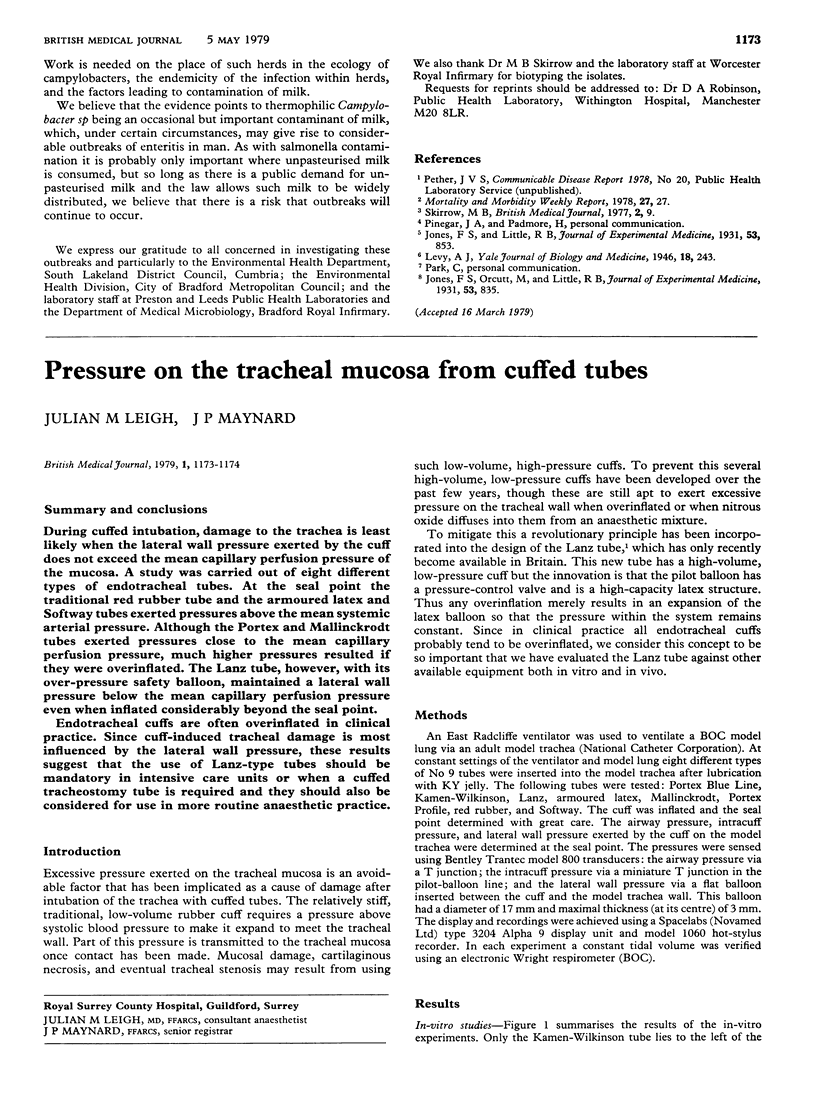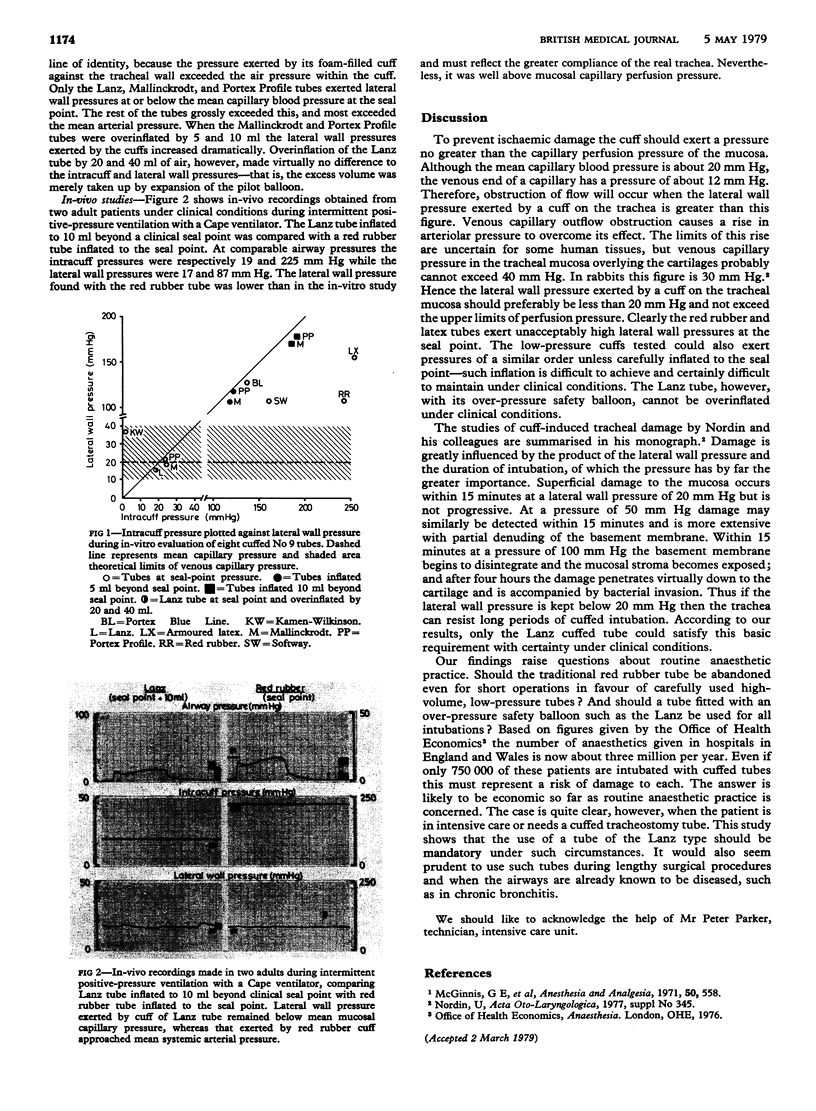Abstract
During cuffed intubation, damage to the trachea is least likely when the lateral wall pressure exerted by the cuff does not exceed the mean capillary perfusion pressure of the mucosa. A study was carried out of eight different types of endotracheal tubes. At the seal point the traditional red rubber tube and the armoured latex and Softway tubes exerted pressures above the mean systemic arterial pressure. Although the Portex and Mallinckrodt tubes exerted pressures close to the mean capillary perfusion pressure, much higher pressures resulted if they were overinflated. The Lanz tube, however, with its over-pressure safety balloon, maintained a lateral wall pressure below the mean capillary perfusion pressure even when inflated considerably beyond the seal point. Endotracheal cuffs are often overinflated in clinical practice. Since cuff-induced tracheal damage is most influenced by the lateral wall pressure, these results suggest that the use of Lanz-type tubes should be mandatory in intensive care units or when a cuffed tracheostomy tube is required and they should also be considered for use in more routine anaesthetic practice.
Full text
PDF




